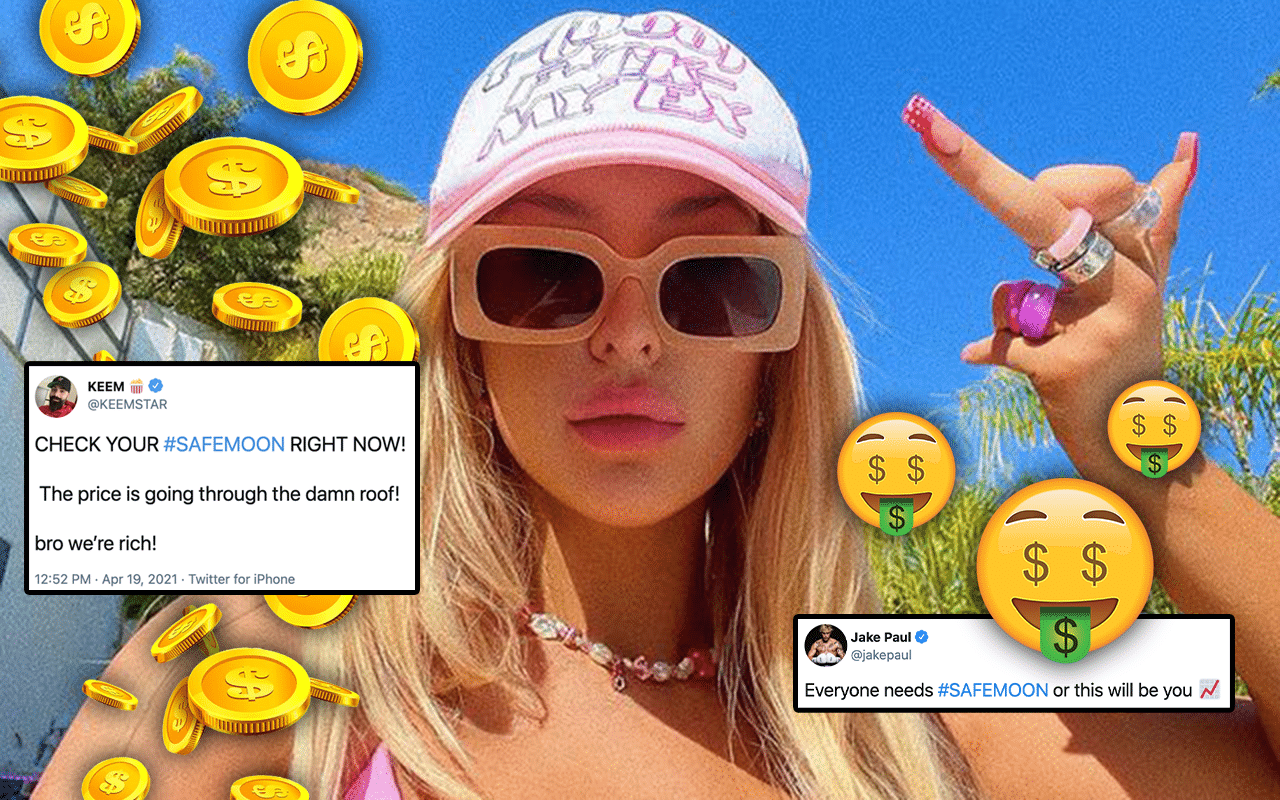
If you keep up with influencer culture then chances are you’ve seen several posts in recent weeks promoting cryptocurrency.
With the promise of earning easy money, stars like Jake Paul, KEEMSTAR, and Tana Mongeau are calling on their millions of fans to invest in relatively unknown cryptocurrencies, creating a FOMO effect by claiming the coin’s value is on the rise. This strategy, called pump and dump, has existed for decades on the equity markets as a form of securities fraud that is often compared to a Ponzi scheme.
But having made their way into the crypto market, pump and dump scams have become the latest way for influencers to exploit their fans and take their money.
Everyone needs #SAFEMOON or this will be you ? pic.twitter.com/r9DCQG0pmQ
— Paul Paul (@jakepaul) March 27, 2021
How does pump and dump work?
Traditionally, pump and dump scams occur when a small group of investors decide to purchase stock in a company with low market value AKA at a low share price. They enlist other investors to buy-in under the guise that the company’s value is increasing. As more people buy-in, this ‘pumps’ the stock price up. The initial investors then sell their stock at a much higher price than they purchased it for, making money on an artificial capitalisation they essentially created. Selling bulk stock that was purchased at a low price drives the current price down— hence the ‘dump’— and other investors suffer significant losses.
While this practice is illegal on equity markets, the cryptocurrency market remains relatively unregulated and thus these scams have become increasingly prevalent.
Why are influencers getting involved?
Unlike traditional pump and dump schemes which rely on trading boiler rooms to call up potential investors and convince them to buy stock in the target company, bravenewcoin.com explains that cryptocurrency pump and dump relies on social media to function, making influencer marketing the perfect medium to facilitate these schemes.
“These schemes target low capitalization cryptocurrencies and digital tokens that can easily be manipulated with low trading volumes,” writes Alex Lielacher. “Instead of boiler rooms, the price pumps are conducted by spreading hype and fake information about a coin on social media.”
In these instances, the influencer tells their millions of followers that they’re making money off a crypto coin. A fraction of their followers will invest in said coin, expecting to make gains as well. As more followers buy-in and the price spikes, the influencer sells their shares and makes a profit, driving the share price down and thus screwing their followers out of the same return. Though different variations of this scenario can play out depending on how the coin functions (some are more transactional while others function more like pyramid schemes), the result is similar— the influencer walks away with profit they indirectly took from their fans’ own pockets.
CHECK YOUR #SAFEMOON RIGHT NOW!
— KEEM ? (@KEEMSTAR) April 19, 2021
The price is going through the damn roof!
bro we’re rich!
Some influencers appear to be promoting pump and dump scams for personal gain while others like Tana Mongeau have been seemingly paid by a crypto coin as a sponsored social media post.
In her latest Instagram post, the 22-year-old OnlyFans star wrote, “me earning money by the pool bc cryptocurrency ? get $TITS coin at TitsCoin.io, and join me in raising awareness for breast cancer ? swipe right and get yours now!!” Tana added “#ad” at the end of the caption, indicating she had been paid to promote the coin.
One week after KEEMSTAR promoted SafeMoon, the coin lost over three quarters of its value according to VICE.
While watching your initial investment double, triple, and sometimes quadruple in a matter of days can be intoxicating, experts warn against buying cryptocurrencies that influencers promote.
New Zealand-based cryptocurrency investor and analyst Lark Davis compared SafeMoon, the coin promoted by Jake Paul, KEEMSTAR, and rapper Lil Yachty, to Bitconnect which crashed in 2018 after the FBI said Bitconnect had a Ponzi scheme-nature.
Bitconnect was for a brief moment a top 10 #crypto, the people making money did not want to accept it was a ponzi, they made every excuse to justify it, and attacked anyone who stated the obvious.
— Lark Davis (@TheCryptoLark) April 21, 2021
Then it rug pulled and everyone lost big time. #safemoon is no different.
“You’re simply reliant on someone further down the line being willing to pay more than you did to turn a profit, which is a risky bet indeed,” financial analyst Laith Khalaf also said of SafeMoon, adding that it “doesn’t sound too different from a pyramid selling scheme”.
The laws might not have caught up to the tech (yet), however it’s arguably unethical for a social media star to exploit the parasocial relationship and trust they have with fans to make a quick buck.
For more on the dangers of pump and dump cryptocurrency scams, see this thread by London-based software engineer Stephen Diehl.


